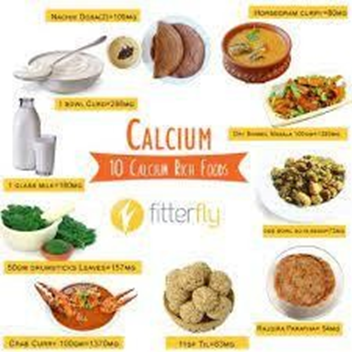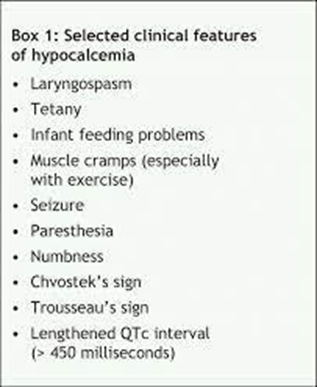Custom 23 WN 250 Exam
ATI Custom 23 WN 250 Exam
Total Questions : 50
Showing 10 questions Sign up for moreA nurse is monitoring a client who is receiving packed RBCs. The nurse identifies which of the following as an expected finding?
Explanation
A. The drip chamber should not be filled completely with blood, as this can cause clotting and occlusion.
B. The blood should not be infused for more than 4 hr, as this increases the risk of bacterial contamination and transfusion reactions.
C. Medications are usually administered separately from blood products to avoid incompatibility.
D. The packed RBCs should be connected by Y tubing to normal saline to prevent hemolysis and maintain fluid balance. This is an expected finding because it allows the nurse to flush the line with normal saline before and after the blood transfusion, and to switch to normal saline in case of a transfusion reaction.
A nurse is caring for a client who is receiving an IV infusion of dextrose 10% in water. The nurse should monitor the client for which of the following adverse effects?
Explanation
A: Dextrose 10% in water does not contain calcium, so hypercalcemia is not a concern.
B: Dextrose 10% in water provides hydration and is not associated with hypovolemia.
C: Dextrose is a form of sugar, and its infusion can lead to increased blood glucose levels (hyperglycemia).
D: Dextrose 10% in water does not affect potassium levels, so hypokalemia is not a concern.
A nurse is applying knowledge to analyze a clinical situation. Which of the following roles is the nurse taking?
Explanation
A: Educator involves providing information and teaching, which is not explicitly related to analyzing a clinical situation.
B: Advocate involves supporting and defending the client's rights but doesn't necessarily imply analyzing a clinical situation.
C: Mentor involves guiding and advising, but it's not directly related to analyzing a clinical situation.
D: Critical thinker involves using knowledge and experience to analyze and solve complex problems in clinical situations.
A nurse is providing teaching to a client who has a terminal illness and is considering palliative care services. Which of the following statements by the client indicates an understanding of the teaching?
Explanation
A: Palliative care includes holistic care, but it's not primarily focused on managing meals.
B: Palliative care can be provided at various locations, including the client's home, not necessarily a skilled facility.
C: While palliative care may support caregivers, its primary focus is on the comfort and well-being of the client.
D: Palliative care aims to make the client comfortable physically, emotionally, and spiritually during a terminal illness.

A nurse is assessing a client who is experiencing hypervolemia. Which of the following findings should the nurse expect?
Explanation
A: Hypervolemia is often associated with increased fluid volume, which typically results in an increased heart rate (tachycardia), not bradycardia.
B: Peripheral edema is a common manifestation of hypervolemia due to the excess fluid in the extracellular space.
C: Hypervolemia is more likely to cause increased blood pressure (hypertension), not hypotension.
D: Oliguria (decreased urine output) is associated with hypovolemia, not hypervolemia.
A nurse is assessing a client who has hypokalemia as a result of nausea, vomiting, and diarrhea. Which of the following findings should the nurse expect?
Explanation
A: Hypokalemia is associated with hypoactive reflexes, not hyperactive reflexes.
B: Hyperactive bowel sounds are more indicative of hyperkalemia, not hypokalemia.
C: Weak, irregular pulse is a common manifestation of hypokalemia and reflects the impact of potassium on cardiac function.
D: Extreme thirst is not a typical symptom of hypokalemia.
A nurse is caring for four hospitalized clients. Which of the following clients should the nurse identify as being at risk for fluid volume deficit?
Explanation
A: End-stage renal failure is associated with fluid retention, making this client less likely to be at risk for fluid volume deficit.
B: Left-sided heart failure with an elevated BNP level suggests fluid overload, not deficit.
C: The client who has been NPO since midnight for endoscopy is not at risk for fluid volume deficit because the duration of fasting is not long enough to cause significant dehydration.
D: The client who has gastroenteritis and is febrile is at risk for fluid volume deficit because of the loss of fluids and electrolytes from vomiting and diarrhea, as well as the increased insensible water loss from fever.
A nurse is instructing a group of clients regarding calcium rich foods. Which of the following foods should the nurse include in the teaching as the best source of calcium?
Explanation
A. While cheese contains calcium, the serving size is small, and it may be higher in fat. Milk is generally a better source.
B. Ice cream contains calcium, but it is also high in sugar and fat. Additionally, the serving size is small, so it may not be the most efficient way to get calcium.
C. Milk is a rich source of calcium and is easily absorbed by the body. It is a staple in promoting bone health.
D. Cottage cheese does contain calcium, but the amount may not be as high as in milk. Also, some people may not prefer cottage cheese.

A nurse is caring for a client who had total thyroidectomy and a serum calcium level of 7.6 mg/dL. Which of the following findings should the nurse expect?
Explanation
A: Hypocalcemia (low calcium) is associated with increased bowel motility, leading to diarrhea rather than constipation.
B: Hypocalcemia is more likely to cause prolonged, not shortened, QT intervals on an electrocardiogram.
C: Hypocalcemia is associated with hyperactive, not hypoactive, deep tendon reflexes.
D: Tingling of the extremities (paresthesia) is a common neurological manifestation of hypocalcemia.

A nurse is caring for a client.
For which of the following interprofessional team members should the nurse anticipate a provider's referral? Select all that apply.
Explanation
A. Case manager may be involved in coordinating overall care, but based on the current assessment findings, there is a more immediate need for rehabilitation services.
B. A respiratory therapist can help manage the client's oxygen therapy and monitor their lung function.
C. Diabetes nurse educator is not directly relevant to the client's current condition as described.
D. The client's flaccid right upper and lower extremities with decreased muscle tone and strength indicate a need for rehabilitation and physical therapy.
E. The client's difficulty feeding themselves suggests a need for occupational therapy to address activities of daily living (ADLs) and improve independence.
F. Enterostomal therapy nurse is not indicated based on the information provided. The client's issues are primarily related to mobility and activities of daily living.
You just viewed 10 questions out of the 50 questions on the ATI Custom 23 WN 250 Exam Exam. Subscribe to our Premium Package to obtain access on all the questions and have unlimited access on all Exams. Subscribe Now



